
surfresearch.com.au
beaurepaire : riding waves at hawaii, 1921
beaurepaire : riding waves at hawaii, 1921
|
|
|
|
|
|
 |
surfresearch.com.au
beaurepaire : riding waves at hawaii, 1921 |
| Frank
Beaurepaire : Riding
Waves at Hawaii. Life (Australia) 01-08-1921. |
Frank
Beaurepaire: National Sporting Museum Archive,
MCG, Melbourne. Collated by Craig Baird, Australian National Surfing Museum,Torquay, Victoria. |
Redwood
Boards at Lorne 1920. Film discovered and preserved by Barry Langan. |
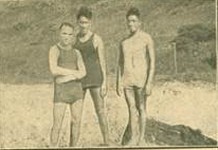 |
THREE WORLD'S CHAMPIONS. Frank Beaurepaire, with Duke Kahanamoku and Pua Kealoha, of Hawaii. The Duke is twelve years older than his rival, but Beaurepaire predicts that there will be a keen struggle for supremacy at the Island championships in October. Photograph: National Sporting Museum Archive, MCG. |
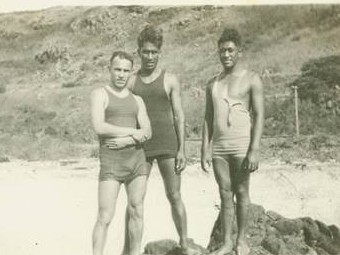 |
 Riding
inshore on the surf-boards, Honolulu.
This exhilarating sport requires swimming ability, skill and nerve, but it has a fascination all its own. |
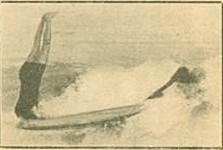 The Trick Rider One of the expert surf-board riders coming in "on his head," with a companion balancing the board. |
AUSTRALIAN SWIMMER AT HONOLULU. Mr. and Mrs. Frank Beaurepaire in front of the Moana Hotel, Waikiki, the most famous bathing beach in the world. |
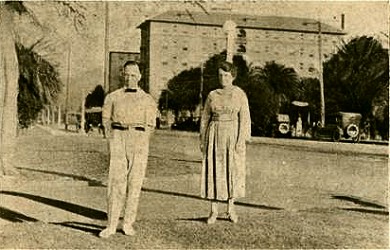 |
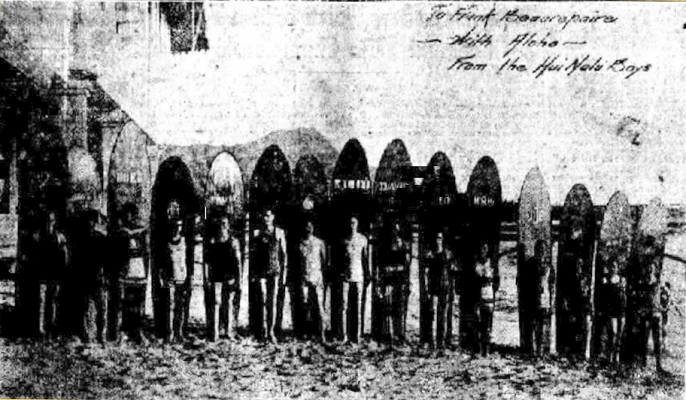
| The Sporting
Judge Melbourne, Monday 6 February 1915 page 1. Duke
Kahanamoku
World's Greatest Swimmer St Kilda Baths ... Saturday, February 13th City Baths ...
Monday, February 15th
? Melbourne, Friday 12 February
1915 page ?
|
 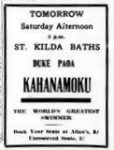 |
|
The Herald
Melbourne, Monday 15 February 1915 page 1. SWIMMING
EVENTS EXCITE INTEREST
KAHANAMOKU MAKES VICTORIAN DEBUT Noted competitors at Melbourne Swimming Club's annual ??? Duke Kahanamoku, H. M. Hay and George Cunha. |
 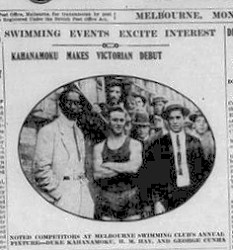 |
|
Studio
portrait, c 1919.
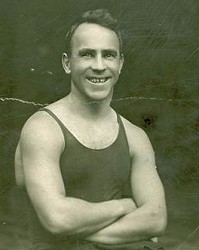 Frank Beaurepaire, Waikiki, 1921. |
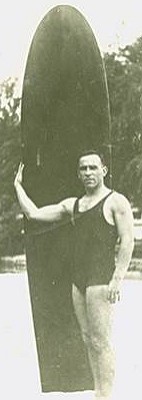 |
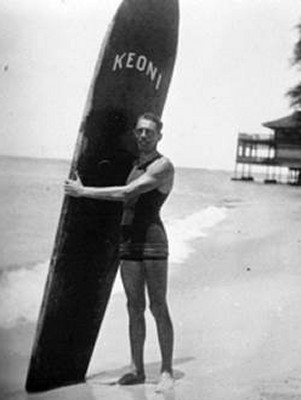 Louis Whyte
and Keoni,
Waikiki 1919. |
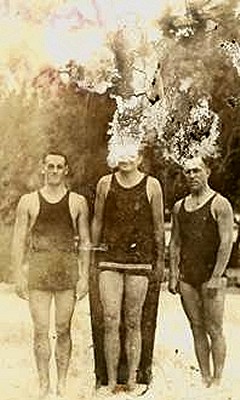 Frank
Beaurepaire and friends,
Waikiki, 1921. |
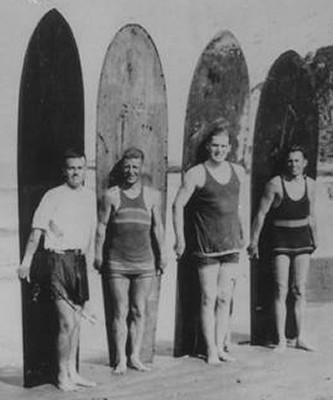 Bill Hale,
Alam McGillivray, ‘Blue’ Harper
and Lois Whyte, Lorne 1920. |
|
On the Beach at Waikiki!
Beach Boy -
Sun Tan - Malihini
Old timers
were glad to welcome back to Waikiki beach Frank
Beaurepaire of Australia, recognized as champion
swimmer of the world in 1910, who, accompanied
by Mrs. Beaurepaire is staying at the Moana
hotel for a week before making a combined
business and pleasure trip through Canada, the United States
and Europe.
|
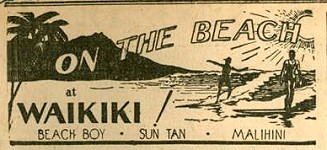 |
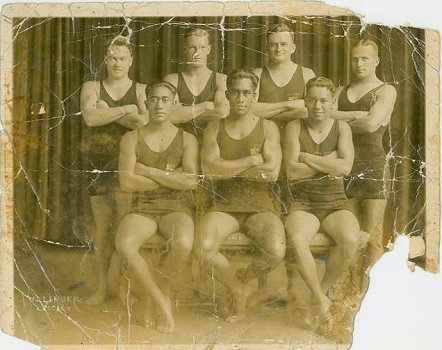 Duke and
Hui Nalu Swim Team, 1920?
|
Outrigger
Canoe Club Courtesy card: Mr. and Mrs Frank Beaurepaire, May
1932.
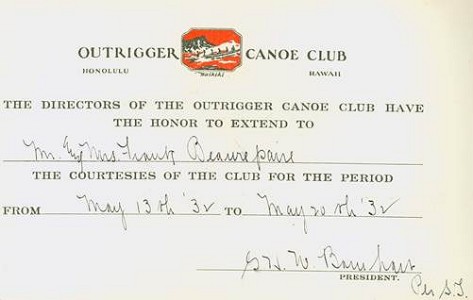 National Sporting Museum Archive, MCG. |
| The Advertiser Honolulu, 17th May, 1932. Veteran Swim Star Will Be Guest at
Luau
Frank Beaurepaire, former world's swimming champion of Australia, is in our midst today enroute to the Mainland. He will sail Thursday on the Empress of Japan. Beaurepaire represented the Antipodes in the Olympics about two decades ago and competed against Duke Kahanamoku and other famous stars of that time. Tonight he win be entertained at a luau given by Duke Kahanamoku, "Dad" Center and othter swimmers and fans. Photograph:
National Sporting Museum Archive, MCG.
|
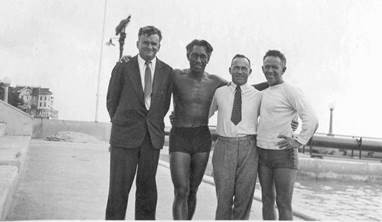 Dad Center, Duke, F. Beaurepaire?, Honolulu,1932 |
To Don
Beaurepaire
Malo Aloha Duke P. Kahanamoku Honolulu, T.H. In Melbourne for the Olympic Games 1- 12- 1956 Don was Frank Beaurepaire’s son, Donald. |
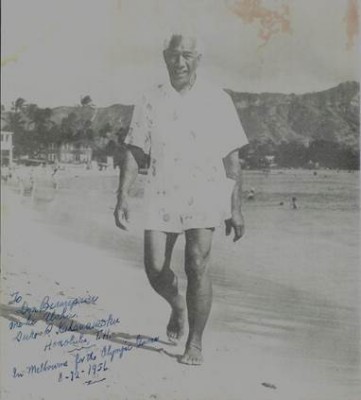 |
| Frank Beaurepaire: National
Sporting Museum Archive, MCG, Melbourne. Collated by Craig Baird Australian National Surfing Museum,Torquay, Victoria. |
|
|
|
|
|
|